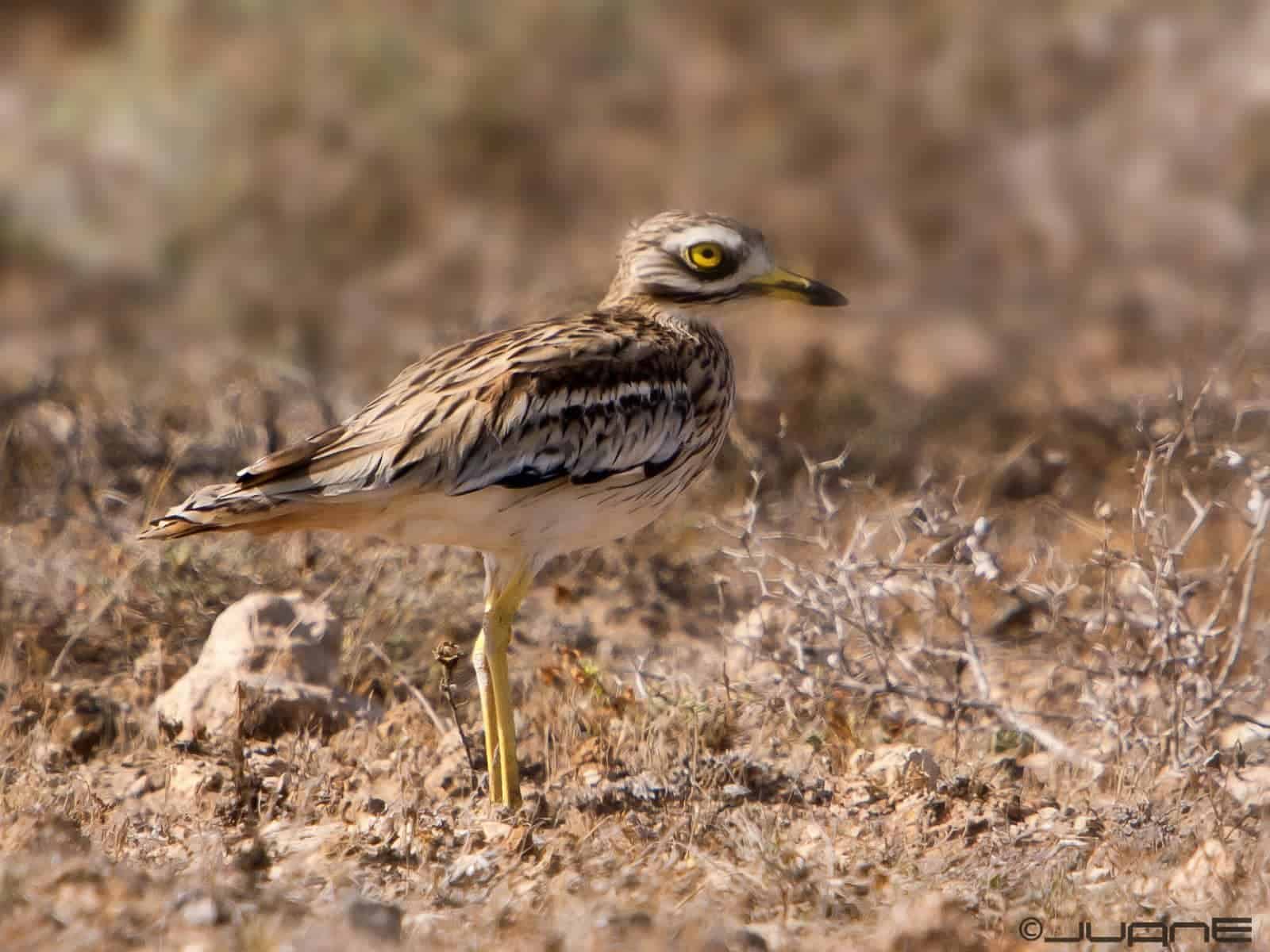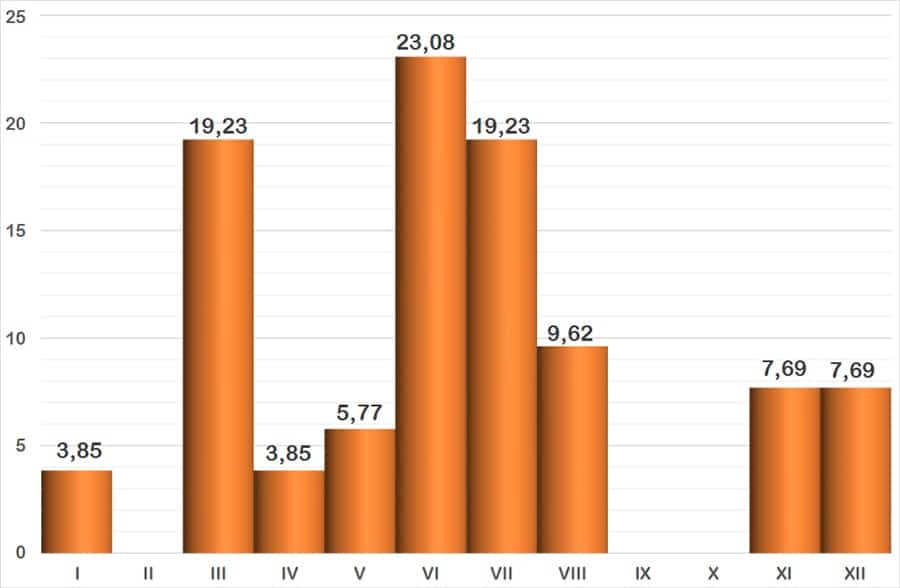It has an ungainly appearance, and its rounded head stands out when standing still, scanning the horizon with its striking yellow eyes. Its legs and beak are the same colour. Its back is mottled in earthy colours with dark spots and a white bar on its covert feathers. It often runs along the ground in a very horizontal position with its neck tucked in, which helps in its identification.

La imagen es autoría de Juan Emilio. Licencia Creative Commons con algunos derechos reservados.
Species 1
Eurasian Stone-curlew
Scientific name
Family 2
Taxonomic Affinity Group 3
Phenology 4
It is a resident bird on the Iberian Peninsula, breeding in steppe areas and moving around during. This is noticeable in Roquetas de Mar, in some places it is only a summer visitor and in others it is present in winter, or when it is just passing through. In ‘Punta Entinas-Sabinar’, and therefore in the Cerrillos area, we can see how it is a bird that remains during the summer (breeding), disappearing during the migratory passages, i.e., in the months of February (prenuptial) and September and October (postnuptial). It is these local movements during which they gather in flocks, usually nearby.
.
The graph represents the probability of seeing a species during the year, grouped into months. The vertical axis indicates the percentage value. Each of the bars expresses its value. The horizontal axis represents the months: I = January, II = February, III = March, IV = April, V = May, VI = June, VII = July, VIII = August, IX = September, X = October, XI = November and XII = December.
Observation recommendations
Its nocturnal habits, in addition to its secretive nature (it takes a long time to take off) make this bird a challenge to watch. It is easier to hear starting in the afternoon and sunset. Moreover, it is a bird which is considered to be related to waders, but it feeds and lives in steppe environments. It is precisely the loss of these environments that makes it one of the most endangered birds.
Observation areas where we can find it
Notes
[1] The names used are from the list of birds of Spain, drawn up by SEO/BirdLife and updated to 2019 (https://seo.org/listaavesdeespana/). The reference is: Rouco, M., Copete, J. L., De Juana, E., Gil-Velasco, M., Lorenzo, J. A., Martín, M., Milá, B., Molina, B. & Santos, D. M. 2019. Checklist of the birds of Spain. 2019 edition. SEO/BirdLife. Madrid.
[2] The taxonomic family to which it belongs is indicated.
[3] Traditionally, waterbirds have been grouped according to their taxonomy or “taxonomic affinity”, i.e., when some birds coincide in certain features that allow them to be classified scientifically, but without leaving the rigour of science, they are put together in these groups so that they can be easily recognised. These groups are the following: Greves (belonging to the Podicipedae family), Herons and Similar (includes the families: Ardeidae -Herons- Ciconiidae -Storks- and Threskiornithidae -Ibises and spoonbills-), Ducks (the whole Anatidae family), Coots and Similar (the family Rallidae corresponding to Rails, Gallinules and Coots), Cranes (also with only one family, the Gruidae), Waders , a heterogeneous group, the most diverse of this classification, includes the families Burhinidae (Stone-curlews), Haematopodidae (Oystercather), Recurvirostridade (Avocets and Stilts), Glareolidae (Pranticole), Charadriidadea (Plovers), Scolapacidae and finally Gulls and Similar (the recently unified family Laridae, i.e. Gulls and Terns).
[4] Phenology studies the relationship between the cycles of living beings and meteorological factors, and in our latitude these factors manifest themselves as variations throughout the year, thus relating the seasons to the birds’ cycles (breeding, migratory journeys, etc.) The graph shows the probability of seeing a bird depending on the month. It uses data from 48 bird censuses carried out between October 2016 and September 2018. The method used is that of a census route with sampling stations, with a total count on the sheet of water.
